Your car battery plays a vital part in making your car run. It is also responsible for making the electronic components in your vehicle, including the air conditioner work. So, you can just imagine how much of an inconvenience it can cause you if something bad happens to your car battery.
Although it can’t be avoided, there are actually ways in which you can make the lifespan of your car battery last longer. While if not cared for, your car battery can also turn on you for the worst.
While no one ever wants to deal with it, one of the common signs that something is wrong with your battery is the presence of a yellowish powder.
This can also be white at times. But regardless of its color, one thing for sure is it definitely shouldn’t be on your car battery.
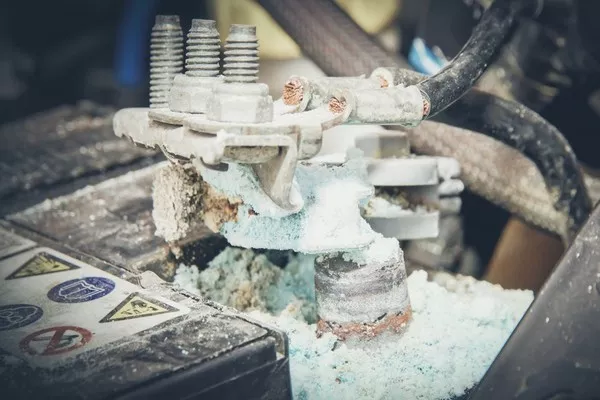
One of the common signs that something is wrong with your battery is the presence of a yellowish powder.
But what exactly is this unsightly powder on your battery? Where did it come from? What does it mean for your battery? Is it something you need to worry about?
The answers to those questions along with other tips and how to’s are listed for you in this article from Philkotse.com.
What does a car battery do?
A car battery is designed to give power to your engine once you turn the car key. This means without it or without a battery in good health. You will most likely have trouble starting your car. You may even result in using jumper cables just to get the car started.
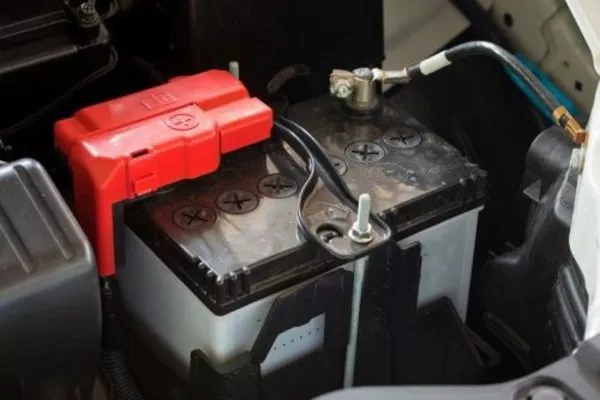
A car battery is designed to give power to your engine once you turn the car key
>>> You might concern: A driver's guide in choosing the right battery brand in the Philippines 2020
What does the white/yellowish powder on a car battery mean?
This white or yellowish powder that appears on car batteries usually isn’t that much. But it is enough for the owner to notice it.
But at this point, that fuzzy stuff on the battery is enough to tell you that something is wrong. That yellowish or white powder is actually corrosion.
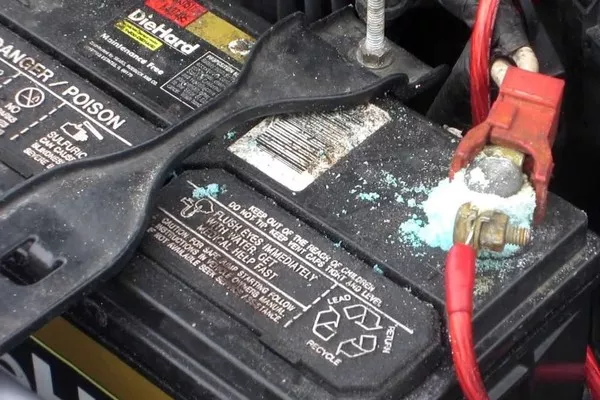
That fuzzy stuff on the battery is enough to tell you that something is wrong.
What causes corrosion in-car batteries?
Build up in car batteries can come in varying colors like bluish-white, blue, yellow, and yellow-white. This is usually seen around the battery’s terminals, the cell tops and sometimes, the posts.
If it fits any of the descriptions we just mentioned, you are dealing with corrosion. This comes from the sulfate’s reaction with the battery’s lead in the unit’s terminal post.
The cause can be an improper seal on the car battery. This is usually what happens if you purchase a low-quality battery. But this can also come from other reasons like overcharging the battery often or a very old battery.
Car batteries are usually meant to last between 2 to 5 years with care and maintenance. If your battery is in this timeline and gives seldom care to it, you may want to start developing maintenance habits for the sake of your battery.
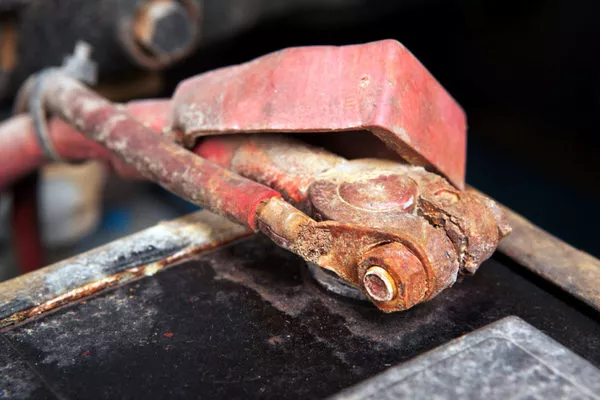
Corrosion comes from the sulfate’s reaction with the battery’s lead in the unit’s terminal post
>>> Recommended for you:
- How Long Do Car Batteries Last: The Numbers and The Factors
- 3 essential things to know about car battery
How to clean corrosion off car batteries?
If you want to keep using your current car battery as long as possible, your best bet is always to keep the terminals clean. This may seem like a lot of work.
But if you want to get the best out of what you spent on your car battery, you need to take care of it. There are actually tons of ways that you can achieve a cleaner and corrosion-free battery. But here are some of the most recommended ways you can do it.
1. Use a dedicated brush
Scrub the battery terminals with a dedicated brush for your car terminals. These are specially designed to brush off dirt and grime from the small crevices of the battery for a more thorough clean.
Once you get rid of the corrosion, brush the terminals every now and then. This will avoid build-up.
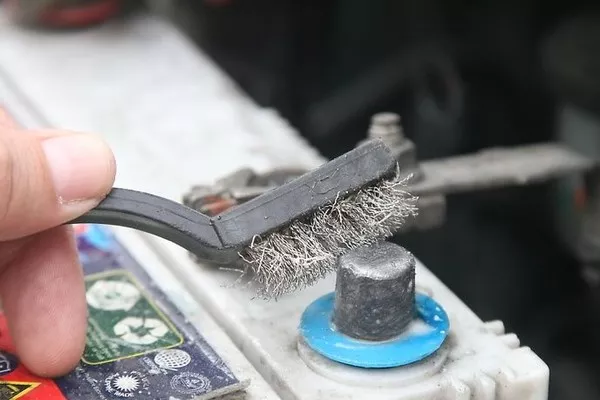
Scrub the battery terminals with a dedicated brush for your car terminals
>>> Related: Battery terminal: How to clean & Replacement cost
2. Use baking soda
Mix baking soda with some tap water and get a toothbrush. Dip the toothbrush in the baking soda and water mixture and brush the corrosion away. Then, wipe away the dirt and grime with a rag or a disposable paper towel.
3. Use soda
Take some of the diet variants of your favorite soda and pour it on your battery terminals. Let it sit for a couple of minutes, so the soda settles and does the job.
Then, take out your terminal brush and start brushing the corrosion away. Make sure you leave the battery as clean as can be after this.
Note about this step: Be careful when using diet cola to clean the battery terminals. You need to make sure that the soda variant you pick out is sugar-free.
Also, don’t use it too frequently. The sugar substitute in diet soda is a corrosive material that can wear down your battery post quickly.
>>> Just in case you need:
Car battery maintenance
Now that you know what that bothersome powder is and you’ve made a better step for your battery, it’s time to think about keeping it this way from now on. A battery with obvious signs of corrosion won’t take too long before it loses its life.
If you noticed that there are powder sediments like mentioned earlier, you need to take immediate action. If not, sooner or later, your battery is going to give you a hard time starting your vehicle.
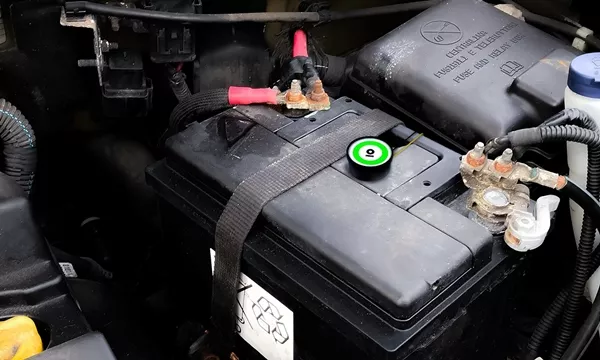
If you noticed that there are powder sediments like mentioned earlier, you need to take immediate action
To keep your car battery in good shape, clean the battery terminals at least once a month. But if you can do it more frequently than that, why not! You can also purchase some cleaning materials that are designed to keep corrosion off your battery for longer.
- Aside from that, you should also consider checking the electrolyte levels every now and then. Make sure you keep your battery hydrated and don’t add anything else asides from distilled water. If you ever need to add anything else in there, it would be sulfuric acid. But it’s best if you let experts decide on this.
- You can also check the condition of the electrolytes in each cell. Take a hydrometer and squeeze the ball so you get enough substance in the tester. Then hold the hydrometer upright and take note of the readings. You can squirt the electrolyte back into the battery after.
Recent posts
- This is how you can diagnose your car's dead car battery Jan 14, 2020
- Do you think you know all different types of car battery? Jan 05, 2021
- Everything you need to know about battery electrolytes Dec 31, 2019
- How to keep car battery from dying and everything you need to know Mar 12, 2021
- [Philkotse tips] Installing an auxiliary battery: How safe is it? Aug 16, 2022












